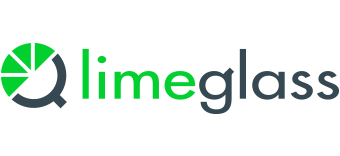Post-publication document tagging to validate and extend the Research metadata in your database
- Problem Solved: Inconsistent manual tagging leading to incorrect tags stored in database.
- Client Benefits: Maximise thematic discoverability of research.
- Post-Publication: Simply add Limeglass as a regular recipient of your research and get back tags for all your documents.
- Document Level Tags: Limeglass maps to your existing taxonomy or can provide an even richer level of tagging according to its huge proprietary ontology. And even if you are only set up for Document Level (rather than Paragraph Level) tags, you will still benefit from the Atomisation technology due to the Coverage metrics Limeglass calculates from the tags in each paragraph.
- Ingestion & Atomisation
- Post-Publication
- Automatic Tagging
- Document Level Tags
- Output
- Custom Delivery
- Client Type
- Research Operations
- Where does the Client use it?
- Research Portal
Transform your portal’s discovery and search capabilities with Limeglass tags.
The easiest way to benefit from thematic tags is to send Limeglass your published research
Automatically capturing intelligence about the content of a document is highly valuable both before and after the point of publication. Doing this pre-publication is arguably the best way of doing this because it gives you the ability to enhance the direct distribution of your research to clients.
But if you are looking for the benefits of automated tagging without integrating it into your distribution system, the Limeglass post-publication option offers you countless options for this. And the great news is, you can get set up simply by sending your already-distributed research to Limeglass and start receiving tag data back.
One use for this that has been popular with Sell Side firms is to enhance the discoverability of research content on their portals. Existing treatment of content on portals tends to be done in two ways:
- Automation using simple rules based on existing metadata. It is fairly easy to use whatever simple tagging metadata is available to display reports in simple categories. For example, an Industrials Equity Sector page can easily be populated with Industrials research reports.
- Manual curation. This is often done to highlight the highest quality pieces of research or perhaps to group documents together under a single theme. At the moment, it has to be done manually because there is insufficient metadata to automate it.
Don’t manage your portal pages manually – use Tags
Let’s take ‘Artificial Intelligence’ as a theme to which the Sell Side might want to devote a portal page. A glance at Limeglass’ results on a random day for documents mentioning AI quickly reveals results from Consumer, Banking, Industrials, Software, Hardware and many more. It even touches documents from multiple asset classes outside equities. Using the Limeglass ‘AI/ML’ tag as the relevant piece of metadata, therefore, allows those documents to be automatically displayed on that portal page. It is unlikely that the manual curation approach would find all of these results and display them. And if Salespeople or Clients use this portal page, they are likely to be missing key insights into AI as an investment theme.
Tags also make your Research more searchable
The other growing usage of post-publication document tagging is Search. At the moment, searching for Research documents on Sell Side portals has several drawbacks:
- The actual contents being searched through tends to be smaller than the full contents of the document. Therefore, if you search for ‘Board Diversity’, you will miss a document that uses this term on page 2, because only the contents of the first page is accessible to the engine. Or it might be even more limited, perhaps making only the title and abstract accessible, and meaning even a document with ‘Board Diversity’ mentioned on page 1 is missed.
- In the rare cases that the Sell Side firm makes the full document text accessible, searching for ‘Board Diversity’ will still miss all the documents which mention ‘composition of the board’ and ‘women in leadership’. This is because most search systems use simple text matching. This requires the user to think of every possible search term and type them in one by one.
Limeglass tags, however, provide a wonderful solution for this, again with minimal integration cost:
- It does not matter if it is difficult to make the full contents of the document accessible. Limeglass has already tagged all the documents, meaning that a user will know they will get back results for all documents using the term ‘Board Diversity’ anywhere in the content.
- The user does not have to think of all the possible search terms and go through them consecutively because Limeglass has a sophisticated tagging system that does not rely on simple text matching. Instead, the system is built on a carefully managed ontology of over 150,000 tags and ___ associated phrases. This means that the user inherently searches through the tags, rather than through the documents themselves.

